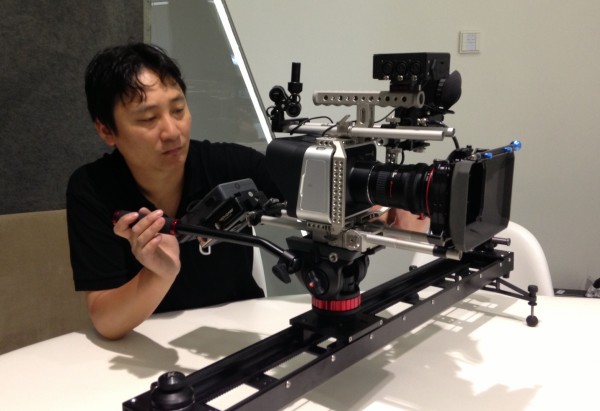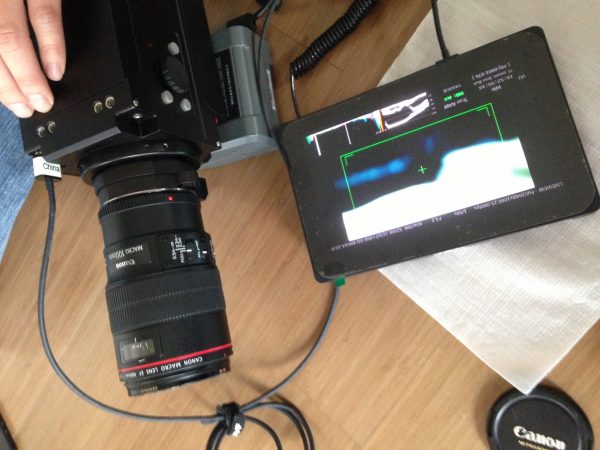By site editor Dan Chung:
Genesis from James Miller on Vimeo.
Okay – so I am officially impressed. A week after the Magic Lantern team unveiled their Canon DSLR RAW hack to the world there have already been substantial improvements to its reliability and usability. There is no doubt that the image quality is substantially better than the stock All-I and H.264 encoding of the 5D mkIII. The fact that many older Canon DSLRs are also able to shoot RAW at lower resolutions is also a feat indeed. As other bloggers have pointed out, the RAW-enabled 5D has an aesthetic that is currently almost unique due to the full-frame sensor.
If you already own a 5D mkIII then for some shoots the RAW format may be incredible helpful. There is no denying that the sample RAW footage around the web does look wonderful. Above is a very good example of just what can be achieved by the very talented James Miller; other examples, below, are examples by Andrew Reid of EOSHD and Johnnie Behiri of Cinema5D.
Canon 5D Mark III Continuous Raw Video with Magic Lantern (1920×1280 24p) from Andrew Reid on Vimeo.
A RAW in the park. (Canon 5D mark III with Magic Lantern RAW module – short test) from cinema5D on Vimeo.
Does the 5D RAW hacked replace cameras like the C300, F3, F5 or FS700 in regular documentary or corporate production? Of course not. But used appropriately, it may have a place. If your shot is repeatable, you have time to redo it if something goes wrong, you don’t need the results in a hurry and are prepared to post-process, and you are not overly worried about potentially damaging your camera or invalidating your warranty, then give it a try. You don’t have to run the hack the whole time, so if you are a 5D shooter then it is a useful trick to have that doesn’t add any weight to your kit bag.
Why don’t I shoot RAW very often on the cameras I own that already have this function? A 5D mkIII shooting 1080P RAW will give you only a few minutes of recording time on a 64GB card – this is similar on my BMCC and KineRAW S35. The post-production workflow is slower and requires more steps than any compressed codec. None of my clients has ever asked for any more than compressed HD. On my shoot this week I’ve been using a Blackmagic Cinema Camera as a second camera to my C300. It can shoot RAW DNG but in my opinion there was no need – I shot Prores instead.

For the 5D mkIII hack to record 1080P RAW requires a super fast CF card to prevent dropped frames – something like the Komputerbay 1000x 64GB or a Sandisk Extreme Pro. Even with the fastest cards there are reports of occasional recording and image errors.
I know that sooner or later I will be shooting RAW much more often – but that might still be a few years away for most real world shooters (commercial shooters are getting there much sooner, it seems). Before then, recording, storage and post-production options need to improve and get cheaper. Right now I will only shoot RAW if I need the best possible image quality or need the extra latitude for a specific shot that would be hard to expose for any other way. Just what sort of latitude RAW on the 5D mkIII buys you is well demonstrated in this video by Riky Johnson:
Canon 5D Mark III Magic Lantern RAW Video Test from Riky Johnson on Vimeo.
Hopefully over coming weeks and months the Magic Lantern team will continue to improve the RAW hack to the point where it is at least as stable as the regular Magic Lantern hack. Extra features like improved reliability in audio recording and spanning of files larger than 4GB will help too. Image artifacts still seem to be present with 5D RAW video – ideally this can be combatted in post or by filtration using a VAF filter from Mosaic design or something similar.
My advice for anyone thinking about using the RAW hack for serious production is to wait. Let the dust settle and then evaluate the hack as a working tool after it is more developed. If you are shooting for fun and enjoy tinkering then by all means give it a go. There are excellent guides on how to set up Magic Lantern RAW over on Cinema5D and EOSHD.
Obviously this invalidates your camera’s warranty so be warned – try at your own peril.
The Kinefinity and Blackmagic alternatives:
NAB 2013 saw other RAW cameras announced that offer what I think is a better solution than a hacked 5D for a similar amount of money – although none of them are also a top rate stills camera or full frame.

The Kinefinity KineRAW Mini is an interesting choice for budget minded shooters looking for a way to get RAW with a large sensor. It has a very nice image and the ability to shoot 2K RAW DNG files to SSD drives. The sensor is a CMOS and is prone to rolling shutter similar to the 5D. Low light sensitivity is not quite as good as the 5D or C300 – there is noise which needs to be removed in post for best results. The camera comes with an electronic EF mount or – for additional money – a short flange PL mount that allows multiple lens adapters to be fitted for different lenses.
But the base unit price is around $3000 and very close to a new 5D mkIII body. The biggest catch for the KineRAW mini is the lack of US and European distribution and support right now. Asia based users can rejoice though. It is available to buy now.
Blackmagic design announced their 4K RAW S35 cinema camera to much fanfare at NAB. They said at the time that they aim to ship in July for just $3995. The camera will have a global shutter and also be able to shoot Prores 422 in addition to CinemaDNG RAW. For now the camera is EF mount only; hopefully a PL version will be along sooner or later. If the image quality is up to spec then it seems like a real bargain – even more so given that it is bundled with a free copy of Davinci Resolve.
Both of these cameras probably make more sense as production tools to be relied on for paying work – but I have to admit may not be half as much fun as the hacked 5D.
5D III raw 14 bit vs 5D III ALL-i test 002 from Adam Rubin – Kaveret on Vimeo.






